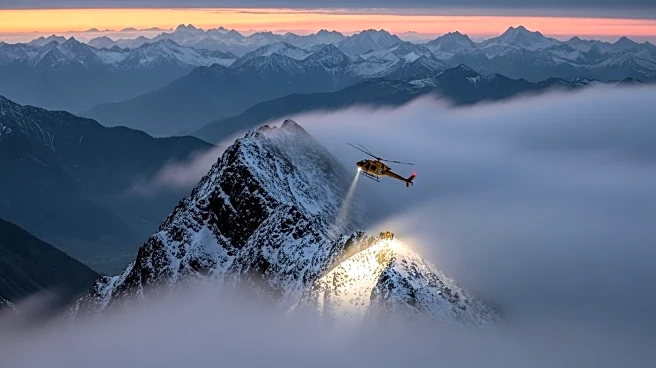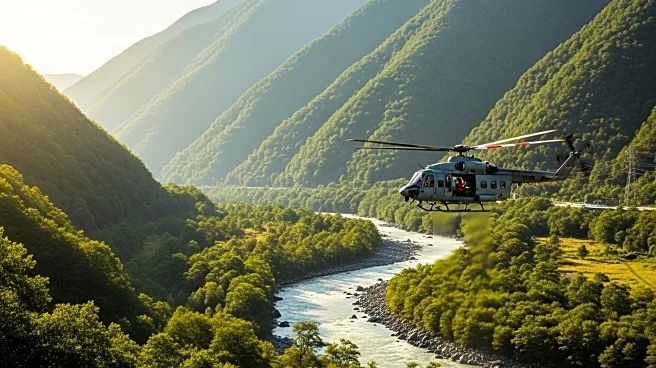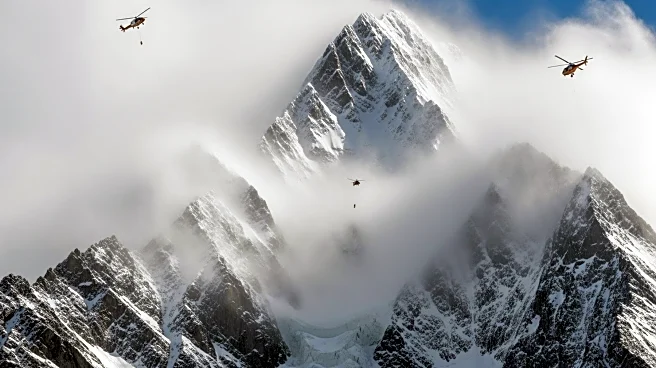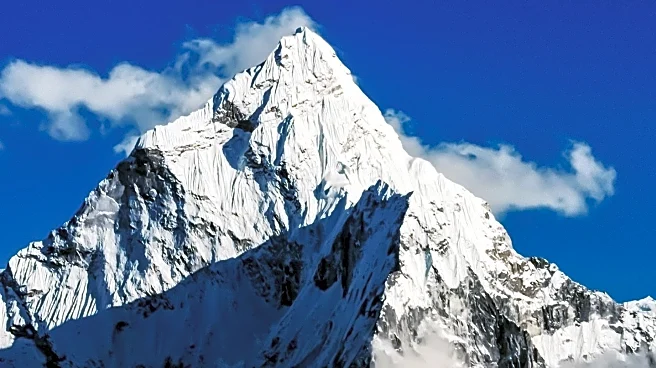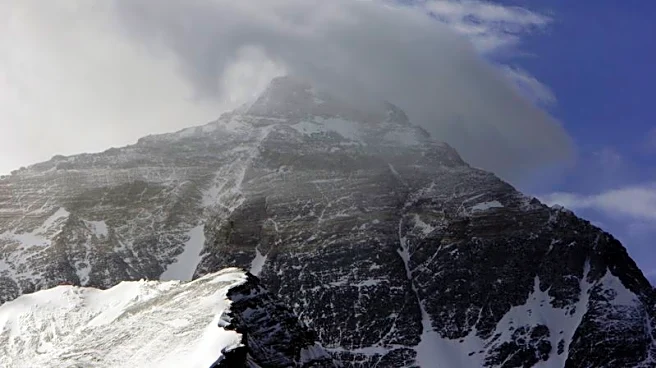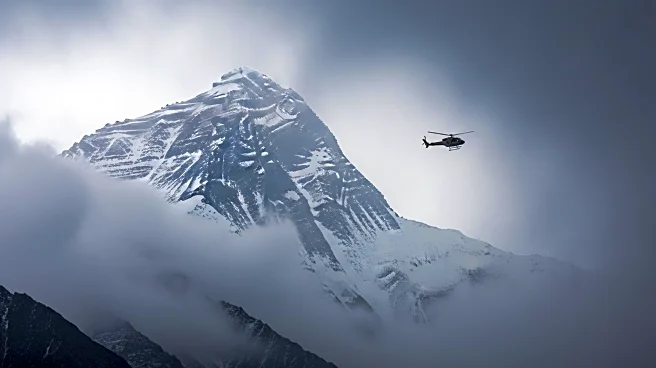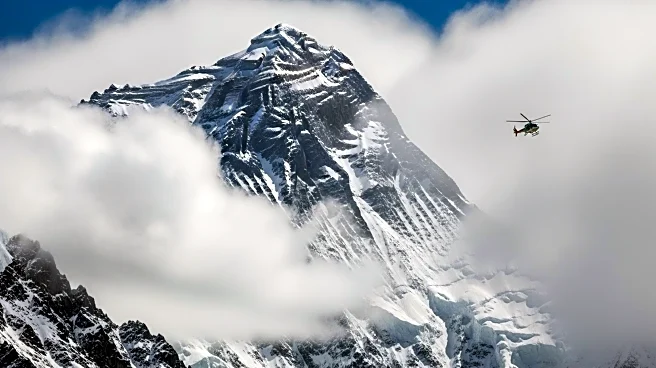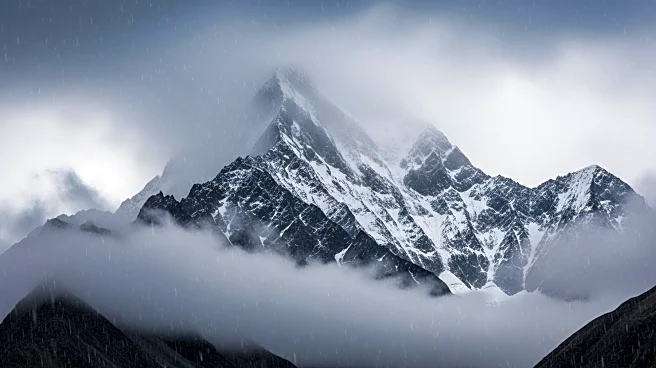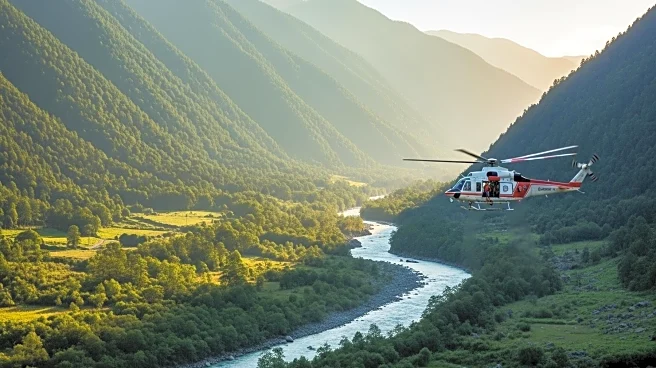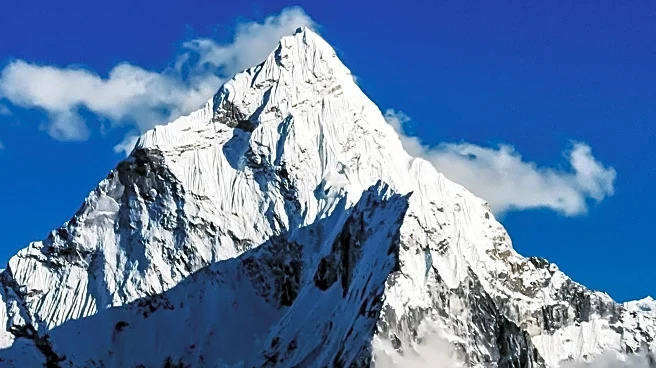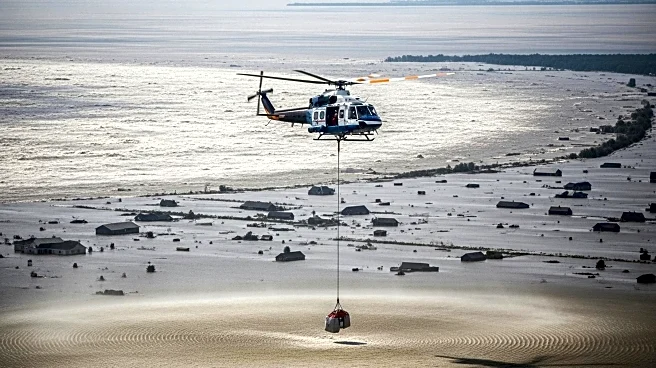What is the story about?
What's Happening?
A severe blizzard has trapped nearly 1,000 adventurers on Mount Everest, particularly on the mountain's eastern face in Tibet. The storm, which began on Friday, has caused tents to collapse and left many climbers suffering from hypothermia. Rescue teams, including Tibet's Blue Sky Rescue team, have managed to bring approximately 350 tourists to safety, but hundreds remain stranded. The Tingri County Tourism Company has suspended ticket sales to the mountain due to the dangerous conditions. The storm has also triggered landslides and flash floods in Nepal and India, resulting in multiple fatalities.
Why It's Important?
The situation highlights the ongoing risks associated with climbing Mount Everest, exacerbated by unpredictable weather patterns. The storm has not only endangered the lives of climbers but also affected local communities through landslides and floods. The incident underscores the need for stringent safety measures and regulations for climbers. The tourism industry, which heavily relies on Everest expeditions, faces potential disruptions. The event also raises questions about the impact of climate change on weather patterns in the region, which could lead to more frequent and severe storms.
What's Next?
Rescue operations are ongoing, with efforts focused on reaching the remaining stranded climbers. Authorities may review and potentially revise climbing regulations to enhance safety. The tourism industry might experience a temporary decline as safety concerns grow. Additionally, there could be increased scrutiny on how climate change is affecting the Himalayas, prompting further research and policy discussions.
AI Generated Content
Do you find this article useful?
